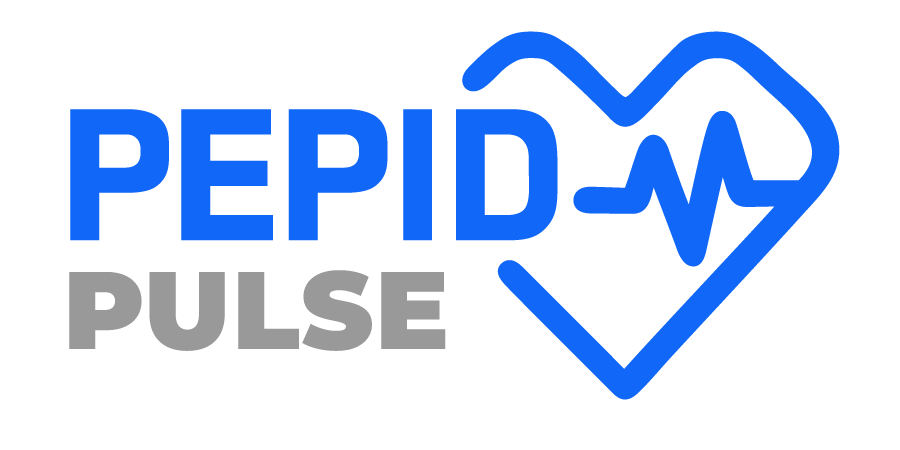Throughout a few short weeks, we saw the entire world shut down in an attempt to limit the spread of the deadly coronavirus or COVID-19. As this occurred, many aspects of life were affected. Here in the United States one of the major industries impacted by COVID was the healthcare industry. Healthcare has been impacted by changes in providing care physically, technologically, and even emotionally.

Social Distancing Guidelines
From a physical aspect, there are evident changes related to social distancing guidelines provided by healthcare experts. Americans are asked to remain six feet apart from others at all times and wear a mask when in public. These regulations change frequently and are enforced on a regional level as public officials attempt to limit the spread of COVID-19. The good news: these guidelines work. According to the CDC out of 20,498,753 health care workers in the U.S., less than 1% of healthcare workers have contracted the illness while at work, which is shockingly low considering healthcare workers are on the front-line often working directly with COVID-19 patients.
To further limit the spread, doctors are working diligently to limit the number of people seen in person, both in the hospitals and private offices. Since the start of the pandemic, there has been a reported 42% decline in Emergency Department in-person visits. Overall, spending in healthcare has declined 38% across the board in April compared to the prior year. This decline in numbers may be owed to the increased use of technology that has been seen during these times.

Rapid Adoption of Telehealth
As in-person visits decline, new home health options have emerged. Patients can opt to video chat with their health providers from the comfort of their own home when they need to see someone. Since March there has been a 154% increase in the use of telehealth visits. Not only is this form of obtaining health care convenient for patients, but it also helps limit the spread of COVID. The large shift to electronic use during the pandemic has caused an increased demand for IT use and knowledge. However, there are still many concerns.
Although home health has become popular, more than 82% of home health care agencies have reported declines in revenue due to the “no in, no out” policy. The American Academy of Family Physicians reported that 70% of primary care physicians are reporting declines in the patient volume of 50% or more since March. Also, privacy concerns now come in to play as telehealth is used more frequently since anything electronically has the potential of being hacked.

Emphasis on Mental & Emotional Health
Lastly, since the start of the pandemic health care has seen a tremendously large increase in health awareness. Many professionals are preaching the importance of hygiene and handwashing, and eating a well-balanced diet to stay healthy. In addition, as quarantines and isolations have been established, there has been a further emphasis on the importance of mental and emotional health. Throughout this time there has been an increase of 9% to 20% of people who felt lonely and/or isolated. A study published by the Lancet reports that COVID-19 survivors appear to be at increased risk of psychiatric sequela. Virtual mental health startups have reported increased utilization ranging from 30%-50% since April.
As time continues to bring uncertainty, the healthcare field will continue to adapt and change to best suit its needs, along with its patients’ needs. Healthcare has been impacted multi-dimensionally, resulting in many necessary changes.
Written by Madison Folsom
References
Diamond, F. (2020, Jun 9). How Healthcare Will Change After COVID-19. Retrieved November 19, 2020 from https://www.infectioncontroltoday.com/view/how-healthcare-will-change-after-covid-19
Koonin, L., Hoots, B., Tsang, C., Lreoy, Z., Farris, K., Jollyend, T., Antall, P., McCabe, B., Zelis, C., Tong, I., Harris, A. (2020, Oct 30). Trends in the Use of Telehealth During the Emergency of the COVID-19 pandemic- United States, January-March 2020. Retrieved November 19, 2020 from https://www.cdc.gov/mmwr/volumes/69/wr/mm6943a3.htm
Rovner, J. (2020, Jun 8). Rapid Changes to Health System Spurred by COVID-19 Might be Here to Stay. Retrieved November 19, 2020 from https://khn.org/news/rapid-changes-to-health-system-spurred-by-covid-might-be-here-to-stay/
(Oct 2020). How Has Covid Changed the Health Care Provision Model. Retrieved on November 19, 2020.


Trackbacks/Pingbacks